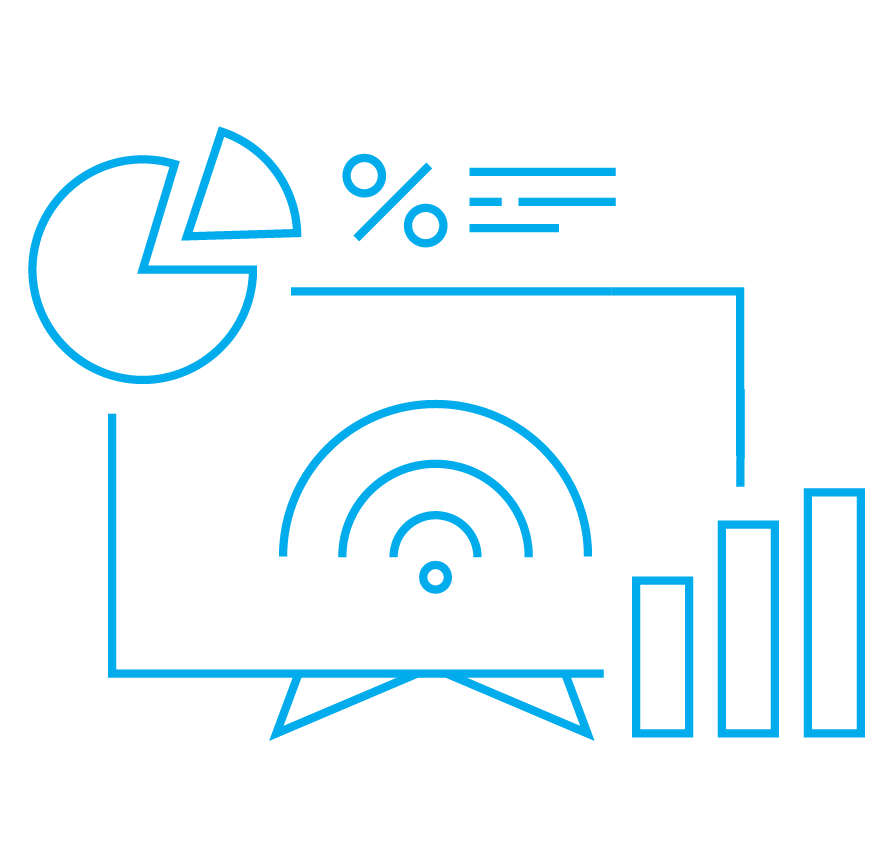- Why is programmatic advertising dominating the digital display market?
- Why is programmatic targeting important?
- The most popular programmatic targeting options
- Audience targeting - how to use 3rd party data in programmatic campaigns?
- What’s next in programmatic advertising?
Programmatic advertising allows marketers to reach the audience smartly through automated selling and buying advertising spaces. That kind of advertising alternative is more comfortable for marketers because it’s faster, and doesn’t need negotiations in person. Moreover, it enables to reach the right audience with many programmatic targeting options. That’s why it’s getting more popular in the advertising industry and it will continue to grow.
Emarketer predicts that by 2023 US programmatic digital display ad spending will reach over $133 billion and this year the growth will be the most noticeable, increasing by 29% compared to the previous year. Looks promising, isn’t it?
Why is programmatic advertising dominating the digital display market?
The main reason why programmatic advertising is dominating a digital display market is that it doesn’t need negotiations in person. There are many more benefits that can be provided to advertisers as well as to publishers. Let’s take a look at a few of them:
- Real-time data: Programmatic advertising gives insights about the performance of the campaigns in real-time so advertisers don’t have to wait for the results of their campaign. Real-time data and high-quality reporting allow optimizing campaigns quickly and more efficiently.
- Scalability: Advertisers can reach a larger audience by purchasing ad spaces from any ad networks available. Thanks to that advertisers, can scale their advertising at affordable prices.
- Precise targeting: Why spend money on multiple amounts of campaigns directed to every type of audience even If it’s not your target? It seems that a smarter way is to address them to a specified group of people that will be interested in displayed ads. Programmatic targeting gives a possibility to target the right audience, which is crucial to efficient advertising.
Why is programmatic targeting important?
Each programmatic targeting option enables reaching the right group of people at the right time, which is beneficial for achieving better results of ad campaigns. However, before implementing programmatic targeting, you need to find out who exactly you want to reach and what is your target audience.
The most interesting part of programmatic targeting is that there are many available options to choose from, and most of them can be used at the same time in order to reach more audiences. Every programmatic targeting tactic enables the faster achievement of online advertising goals for affordable prices.
The most popular programmatic targeting options
Let’s imagine that you’re promoting your new service in Barcelona which was specially created for middle-aged men interested in automotive. How can you do that? What programmatic targeting options do you have and which one will help you to reach your target?
Demographic Targeting
It’s good to start from the basics while you’re planning to reach your audience. In this case, you want to reach middle-aged men. Demographic targeting will help you with finding the right people based on their age, gender, ethnicity, and education.
Geotargeting

If you offer a service located in Barcelona, you want to focus on men at the local market. That’s when you can use geotargeting which helps with finding a target audience from a certain locality. Every device has an IP address that is assigned to a specific location, city, or country that’s why you know from where and what kind of audience will be interested in your products. Internet devices provide the location of users based on the network they use to search the web.
Data Targeting
Based on users’ data, you can achieve the best results from your programmatic campaigns. You have three kinds of data that you can choose from: first-party data, second-party data, and third-party data. Let’s focus on the last one which is collected, segmented, and sold by data providers. That kind of data may be bought by Demand-Side Platforms (DSP) as well as Data Management Platforms (DMP).
Audience targeting – how to use 3rd party data in programmatic campaigns?
Let’s get back to your automotive business. For example, online users who are interested in purchasing a new car, make research online. The best way to reach them with your offer is to choose the group you want to target based on purchase intentions which in this case is a car. Thanks to that your ads will be seen only by the group which is strictly interested in car purchasing.
Behavioral targeting

Behavioral targeting focuses on what the person does on the internet. It uses cookies to reach an audience interested in e.g. car purchasing based on their online behavior and interests that they occur on the internet.
One of the examples of behavioral targeting is retargeting, which focuses on the users that recently visited your website. It is mostly used to target ads to the people specifically interested in a certain product, which increases the chances that they will come back to the website and make the purchase.
This type of targeting can cause improved user engagement and speed up your users’ buying journey by giving them accurate recommendations of the product but that’s not all. There are many more benefits from choosing behavioral targeting in your campaigns.
Contextual targeting
Contextual targeting focuses on serving content-relevant ads to the website that the user is viewing at that moment. Using this option in programmatic targeting, marketers bid on specific keywords or topics across the Web, and after that display ads on the related articles.
For instance, you run an online store with automotive accessories, such as rims, tires. On what websites can you promote yourself? In that case, the best place for the ad would be a website that sells cars, so users while buying a car could notice what else they should buy for their new vehicle.
What’s next in programmatic advertising?
How programmatic advertising and targeting will look in the future? A lot is happening in the advertising industry blocking third-party cookies by Google will be blocked by 2024, Apple limited tracking users with iOS 14.5 update release. Along with changes in user tracking, programmatic targeting will also look different than before, and marketers will need to focus more.
However, despite the upcoming cookieless reality, programmatic advertising is getting more popular. In 2021 total digital ad spending will surpass over USD 455 billion, which means that advertisers and publishers are not going to stop using programmatic targeting. As they start to consider blocking 3rd party cookies as a new opportunity to reach their audience with new programmatic advertising tools with greater concern for users’ privacy.

They will find a new way to target their audience using 3rd party data in a form of unified IDs which is a safer way for obtaining users’ data. Additionally, they will focus more on using 1st party data, IP addresses, and many more tools that are constantly being created.



